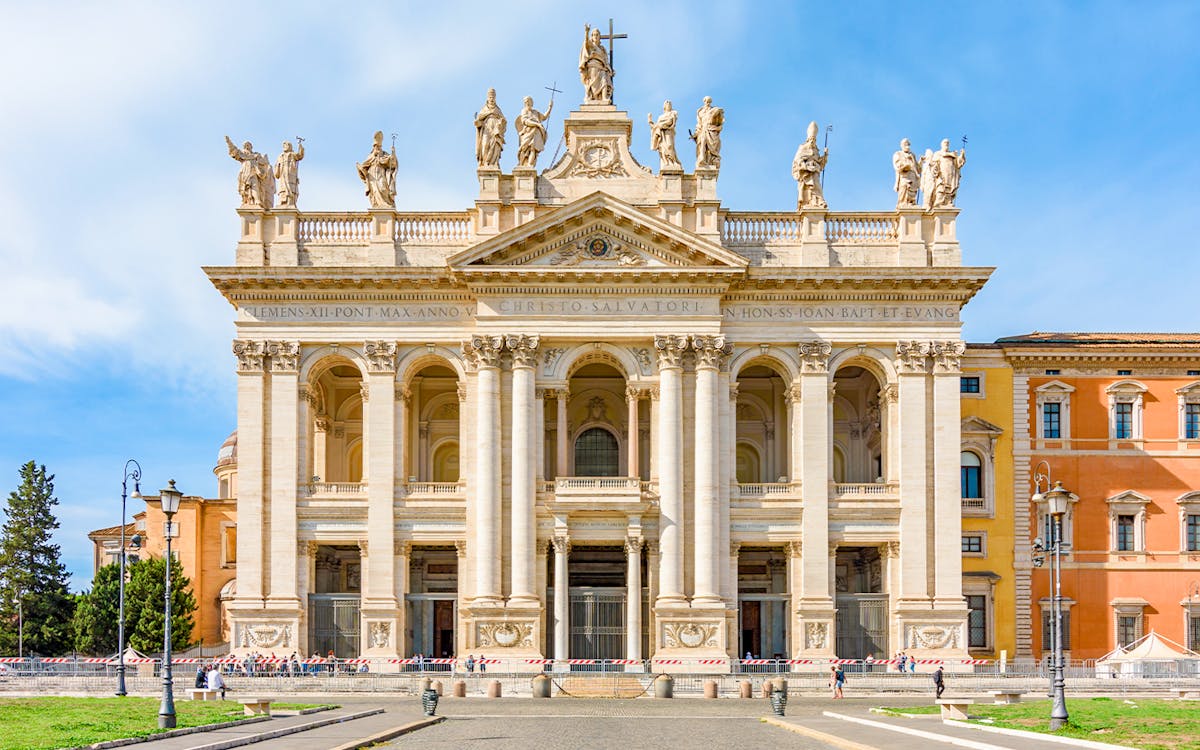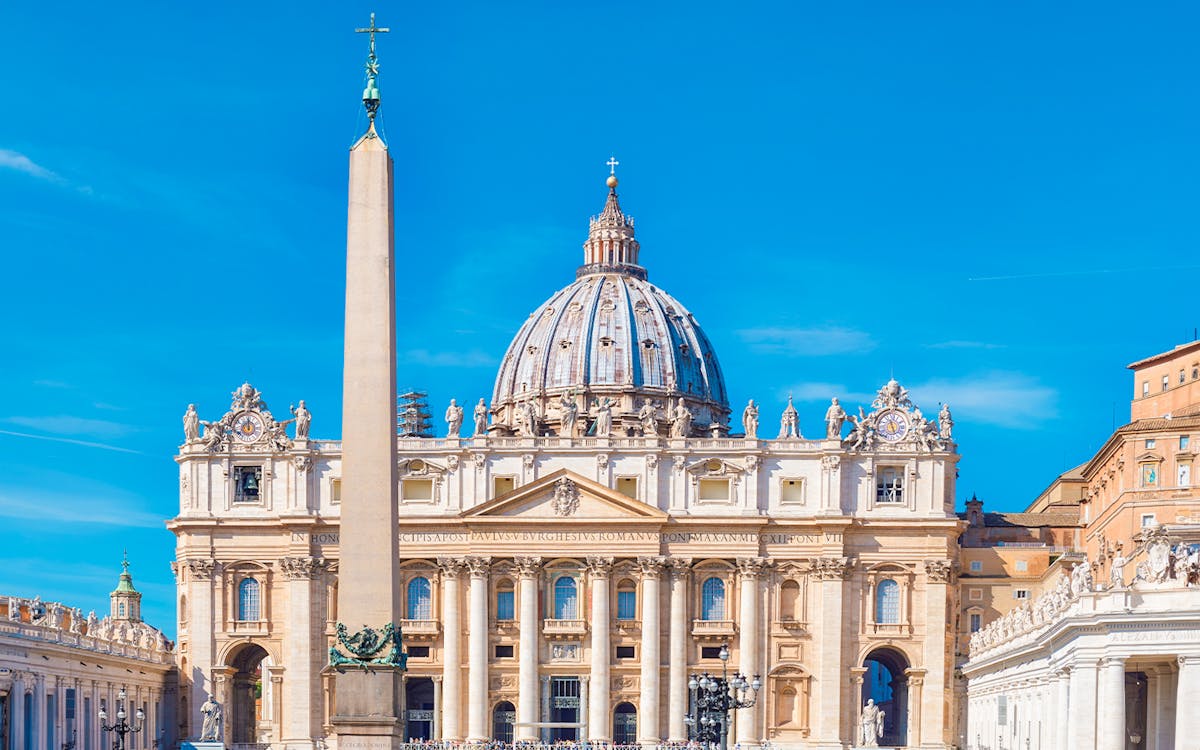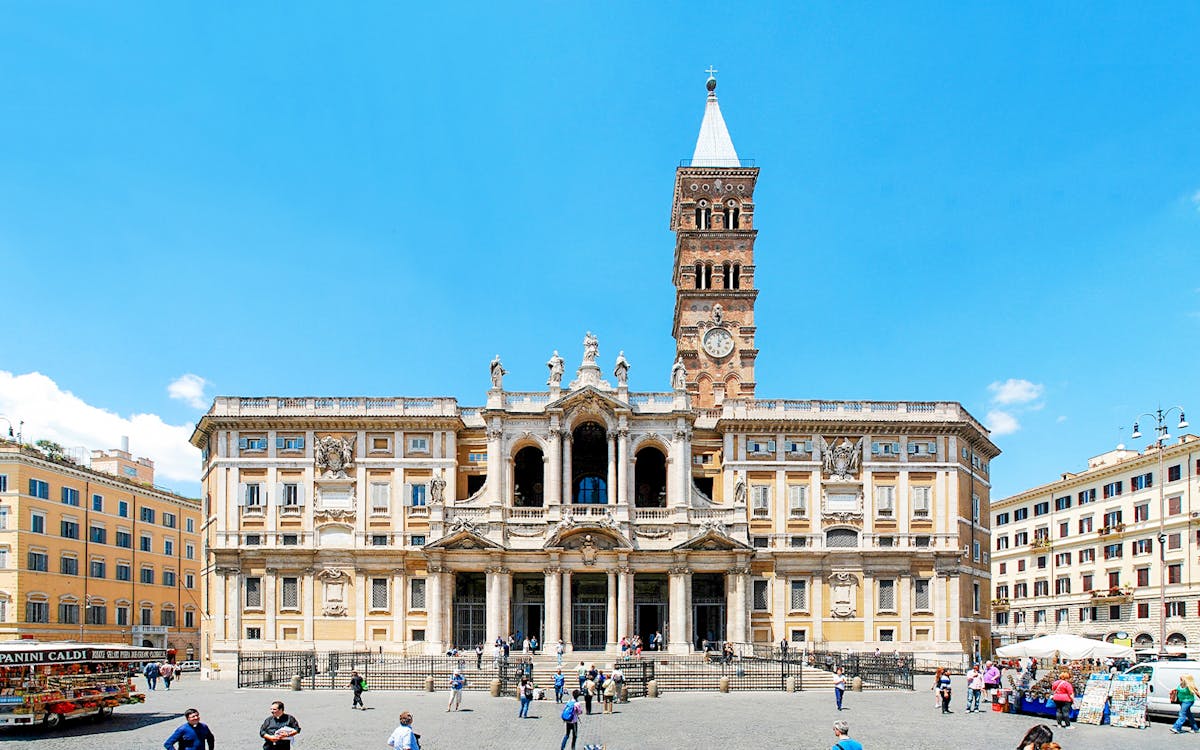Welcome to Rome, a city steeped in history and brimming with architectural marvels. If you're planning a trip to Rome, especially with 2025 being the year of the Jubilee, you're in for a treat. Among the myriad of churches in Rome, four stand out: the Papal Basilicas. These aren't just any churches; they are historical landmarks and key religious sites. The Archbasilica of St. John Lateran, St. Peter’s Basilica, the Basilica of St. Paul Outside the Walls, and the Basilica of St Mary Major, each hold a unique position in both the history of Rome and the Christian faith.
From the oldest church in the Western world (The Archbasilica of St. John Lateran) to the largest church ever constructed (St. Peter’s Basilica), these basilicas offer a journey through time, showcasing remarkable art and architecture while also serving as significant pilgrimage sites for millions. Let's explore these four iconic landmarks and discover what makes each one a crucial part of the religious and cultural Rome that we all know and love.
The four great churches of Rome
- Archbasilica of St. John Lateran
- St. Peter’s Basilica
- The Basilica of Saint Paul Outside the Walls
- Basilica of Santa Maria Maggiore
Archbasilica of St. John Lateran

The Archbasilica of St. John Lateran is a symbol of ecclesiastical power and historical significance. As the oldest and highest-ranking among the four Papal Basilicas, it holds a special place in the heart of Rome and the Christian world. What makes this basilica stand out is its status as the official ecclesiastical seat of the Pope, the Bishop of Rome. Unlike the other basilicas, including the famed St. Peter's Basilica, the Archbasilica of St. John Lateran is the true cathedral of Rome, making it a central figure in the religious life of the city.
A deep dive into its history
Dating back to the 4th century, the basilica’s roots are almost as old as Christianity itself. It was Christian Emperor Constantine I, the first Christian emperor of Rome, who commissioned the construction of this church. This historical context is crucial because it marks the moment when Christianity emerged from persecution to become a dominant force in the Roman Empire.
Over the centuries, the Archbasilica has seen its share of history, surviving through periods of decline, sackings, fires, earthquakes, and restorations. Each restoration and reconstruction has added a layer to its rich history. The current portico façade, an imposing structure, was designed by Alessandro Galilei in the 18th century. It replaced an earlier one that had fallen into disrepair, and today it stands as a striking example of Roman Baroque architecture.
Inside, the basilica's transformation over the years is evident. The interior, redesigned by Francesco Borromini in the 17th century, is a testament to the evolving styles and artistic preferences of different periods. Borromini's work is a masterful blend of grandeur and intricacy, and his contribution is one of the reasons the Archbasilica's interior is renowned for its breathtaking beauty.
More than just a church
The Archbasilica of St. John Lateran is more than just a place of worship. It's a repository of art, a symbol of religious authority, and a witness to the turbulent and triumphant moments in the history of Christianity. From its earliest days to its current grandeur, it has remained a central figure in the religious and cultural life of Rome.
As you walk through its aisles, you're treading on ground sanctified by history. Each corner of the basilica, from its magnificent façade to the stunning interior, tells a story not just of religious devotion but of the evolution of an empire, a city, and a faith.
Visiting Essentials
- Hours: Basilica is open daily from 07:00-18:30.
- The Medieval cloister of the temple is open daily from 09:00 - 18:00.
- Entrance fee: Basilica is free, Cloister at EUR 2.
- Getting there:
Metro Line A, stop at San Giovanni
By bus Route 714, 792, 81, or 85, 87, F02, stop at Piazza di San Giovanni
By train: Board FL1, FL3, FL4, and RV lines, stop at Piazza di Porta Maggiore Best time to visit: Early mornings or between 13:00-15:00.
St. Peter’s Basilica

St. Peter's Basilica, perhaps the most iconic symbol of Vatican City, stands as a pinnacle of architectural excellence. Its grandeur is instantly recognizable, with the majestic dome designed primarily by Michelangelo dominating the Roman skyline. This dome, one of the largest in the world (42 meters/138 ft in outer diameter), not only showcases an architectural feat but also symbolizes the heavenly aspirations of the Catholic faith. Below this towering dome, the basilica spreads out in a harmonious blend of Renaissance and Baroque styles, a testament to the vision of architects like Bramante, Michelangelo, and Bernini.
The interior of St. Peter’s Basilica is truly a sight to behold. From the polished marble floors, a tapestry of intricate designs and colors, to the lavishly decorated ceilings, every inch of the basilica exudes opulence and artistry. The vast nave, with its colossal pillars and arches, guides visitors towards the heart of the basilica, creating an atmosphere of reverence.
Artistic Highlights
St. Peter's Basilica is a treasure trove of art from some of the most celebrated artists in history.
Michelangelo's Pietà:
This masterpiece of Renaissance sculpture, located near the entrance of the basilica, is an embodiment of beauty and sorrow. Michelangelo carved this stunning piece from a single block of Carrara marble when he was only in his twenties. The Pietà, depicting the Virgin Mary holding the body of Jesus Christ after his crucifixion, is renowned for its exquisite detail and emotional impact.
Bernini's Baldacchino:
Bernini's Baldacchino: Standing directly under the great dome is Gian Lorenzo Bernini's Baldacchino, a monumental bronze canopy that marks the tomb of Saint Peter. This towering structure, adorned with detailed sculptures and ornate decorations, is a masterpiece of Baroque art. It not only serves as a visual focal point but also symbolizes the church's connection to its founder.
The Ceiling and Dome:
As you look up, the ceilings, adorned with intricate frescoes and gilded moldings, tell stories from the Bible and the history of the church. The inside of the dome, designed by Michelangelo, is a marvel in itself, with detailed mosaics depicting Christ, the Virgin Mary, and various saints surrounding the central inscription from Matthew 16:18, the foundational verse of the church's authority.
Visiting Essentials
- Hours: Open daily, with varying hours across seasons
- Summer (April to September): 07:00 - 19:10
- Winter (October to March): 07:00 - 19:10Entrance fee: Free for the Basilica. Dome climb costs EUR 5-7
- Entrance fee: Basilica is free, Cloister at EUR 2.
- Getting there:
Metro Line A, stop at Ottaviano
By bus: Line 64, 34, 98, N98, 190F, 881, N904
Best time to visit: Early morning or around 16:00
The Basilica of Saint Paul Outside the Walls

The Basilica of Saint Paul Outside the Walls stands as a powerful symbol of rebirth and continuity. Originally built over the tomb of Saint Paul, this basilica has a history that intertwines deeply with the roots of Christianity. The original structure, dating back to the 4th century, was a testament to the growing influence of the Christian faith in the Roman Empire. However, in 1823, a catastrophic fire ravaged this ancient church, leaving it in ruins.
In 1825, Pope Leo XII initiated the reconstruction, calling for support not only from Catholic countries but also from non-Catholic nations. The current structure, completed in the 19th century, harmoniously blends historical elements with modern touches. The façade, a work of art in itself, is adorned with detailed mosaics and a statue of St. Paul, welcoming pilgrims and visitors from around the world. The basilica, though rebuilt, retains the grandeur and spiritual significance of its ancient predecessor.
Interior Highlights
Upon entering the Basilica of Saint Paul Outside the Walls, one is immediately struck by the sheer size and beauty of the interior. The basilica houses 80 magnificent granite monolithic columns that line the nave, creating a sense of awe and reverence. These columns not only support the structure physically but also add to the spiritual atmosphere, leading the eye towards the altar and the apse.
One of the most remarkable features of the interior is the row of papal portraits. Encircling the upper part of the walls, these medallions depict every pope from Saint Peter to the present, forming a visual chronicle of the Church's history. This unique gallery of pontiffs serves as a reminder of the continuity and longevity of the Catholic tradition.
The apse mosaic, a glorious work of art, is another highlight of the basilica. Dating back to the 5th century, it has been beautifully preserved, showcasing the skill and artistry of the early Christian period. The mosaic depicts St. Paul at the center, surrounded by scenes from his life and teachings, serving as a fitting tribute to the apostle.
A place of pilgrimage and reflection
The Basilica of Saint Paul Outside the Walls is not just a magnificent architectural achievement; it is a place of deep spiritual significance. For centuries, it has been a destination for pilgrims seeking to connect with the legacy of Saint Paul. The basilica's tranquil atmosphere offers a space for reflection and prayer, away from the hustle and bustle of central Rome.
Visiting Essentials:
- Hours: Open daily from 07:00-18:30.
- Summer (April to September): 07:00 - 19:10
- Entrance fee: Free for the Basilica, Cloister at EUR 4.
- Getting there:
By metro Line B to “Basilica San Paolo” stop
By bus: Route 23, stop at V.Le S. Paolo
Basilica of Santa Maria Maggiore

As the largest and most important church in Rome dedicated to the Blessed Mother, it holds a special place in the hearts of the faithful. The basilica's significance is not just limited to its religious importance; it's also steeped in legends and stories that add to its mystical aura. One such legend tells of a miraculous snowfall in August, which outlined the plan for the church, a tale that gives the basilica an almost fairy-tale quality.
Artistic and historical riches
Stepping into the Basilica di Santa Maria Maggiore is like walking into a treasure chest of art and history. One of its most remarkable features is the stunning collection of 5th-century mosaics. These ancient artworks, some of the oldest in Christian art, adorn the triumphal arch and nave with scenes from the Old Testament, providing a glimpse into the early Christian iconography and its evolution over the centuries.
The mosaics are not just significant for their age; they are masterpieces of color and detail, telling biblical stories with a vibrancy and life that is almost tangible. The way these mosaics play with light and shade, gold and color, creates an atmosphere that is both divine and immersive.
Another artistic highlight is the Nativity Scene by Arnolfo di Cambio. Created in the 13th century, this sculpture is one of the oldest representations of Nativity in art. The level of detail and emotional expression in this piece makes it a significant work in the history of Christian art.
A Haven of Marian devotion
The basilica houses the famous relic of the Holy Crib, believed to be a part of the manger in which Jesus was laid. This relic, deeply revered by the faithful, draws pilgrims from all over the world, making the basilica a focal point for Marian worship.
The basilica's architecture, a blend of various styles from different eras, adds to its grandeur and beauty. The 18th-century façade by Ferdinando Fuga covers an older façade from the 12th century, which is adorned with mosaics by Filippo Rusuti.
Visiting Essentials:
- Hours: The Basilica is open daily from 07:00-18:45
- The museum is open daily from 09:30 - 18:30
- Entrance fee: Free for the Basilica, Museum at EUR 3
- Best time to visit: Morning hours or late afternoon
Dress Code
Remember, these are sacred places. Dress respectfully with knee-length outfits and covered shoulders.


